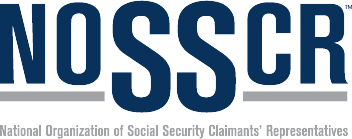OSHA Needs to Protect Workers From Excessive Heat
OSHA has been aware of the dangers that heat can have on workers for many years, but they still do not have a federal plan in place to protect workers from excessive heat. Fortunately, California has put its own plan in place, but many workers across the country are not protected at all from the dangers of working in high temperatures. This needs to change.
Excessive heat can cause a number of health problems and according to an article by Public Citizen, released earlier this year, heat is thought to be behind 170,000 on-the-job injuries and has led to upwards of 2,000 deaths each year. OSHA needs to create a federal plan that will protect workers from these dangers. Without such a plan, too many workers will continue to be injured or even die as a result of working in high temperatures.
What is OSHA and what does it do?
OSHA, or the Occupational Safety and Health Administration, is a federal agency in the United States that was created in 1970. OSHA's main purpose is to ensure the safety and health of workers. This is done by creating and enforcing safety regulations in workplaces across the country. OSHA also provides education and training on safety and health issues to workers and employers.
One of OSHA's primary responsibilities is to protect workers from heat-related illnesses. OSHA has developed a Heat Safety Toolkit to help workers stay safe in hot weather conditions. The toolkit includes information on how to prevent heat-related illness, first aid for heat emergencies, and what to do if you experience a heat emergency. However, more needs to be done because as temperatures keep rising around the world, so does the likelihood for workers becoming injured and sick as a result of the intense heat.
What are the dangers of working in high temperatures, and how can they be avoided/mitigated?
When working in high temperatures, there are several dangers that can occur. These can include heat stroke, heat exhaustion, and heat cramps. OSHA has set guidelines to help workers stay safe in these conditions.
1. Heat stroke is the most serious heat-related illness and can occur when the body temperature reaches 104 degrees Fahrenheit or higher. Symptoms of heat stroke include:
Red, hot, and dry skin
Rapid and strong pulse
Headache
Dizziness
Nausea
Confusion
If you or someone you are working with begins to experience these symptoms, it is important to call 911 immediately and move to a cooler area.
2. Heat exhaustion is less serious than heat stroke but can still be dangerous. It occurs when the body temperature reaches 103 degrees Fahrenheit. Symptoms of heat exhaustion include:
Heavy sweating
Pale or clammy skin
Fast, weak pulse
Feeling tired
Dizziness or lightheadedness
If you begin to experience any of these symptoms, it is important to move to a cooler area and drink lots of fluids.
3. Heat cramps are muscle pains that can occur due to dehydration. They are often the first sign that someone is not drinking enough fluids. Symptoms of heat cramps include muscle pain or spasms in the abdomen, arms, or legs and heavy sweating. It is important to drink fluids if you experience heat cramps and to seek medical attention if they do not go away.
To avoid these dangers, it is important to take steps to protect yourself from the heat. It is also important to know the signs of heat-related illness and to seek medical attention if necessary.
Why is a federal plan important for workers' safety?
Workers' safety is of utmost importance, and a federal plan can help ensure that all workers are safe while on the job. While current guidelines and standards might be helpful short term, a federal plan would help ensure that all workers are safe, regardless of the state in which they work. Additionally, a federal plan would provide funding for OSHA to enforce its standards, and it could also provide further in-depth training and education for workers and employers.
We have seen this be effective when certain states take this into their own hands. For example, California established emergency heat rules in the summer of 2005, becoming the first state to officially do so after at least four farmworkers died in a short period of time. The rules state when temperatures reach 95 degrees Fahrenheit or higher, farmers are required to provide workers with cool drinking water, shade, and rest breaks. They must also have the option to take rests at 80 degrees and above under the regulation, which was further strengthened in 2015.
Since then, Oregon and Washington have established heat standards for employees, while Minnesota has implemented a heat rule only for indoor staff. Nevada, Maryland, and Colorado have passed legislation requiring state officials to establish worker heat standards.
Even if more states pass heat-related workplace legislation, a network of state laws is no substitute for strong federal legislation. Less than half of the states are allowed to create their own occupational health and safety departments. These state agencies have the ability to implement rules that are far stricter and more specific than those imposed by OSHA. The majority of the states in the United States do not have their own OSHA, therefore they must follow federal standards. This is a big issue because if a state has no version of OSHA in place, there is not much they can do internally to protect the workers of their state.
Recent research suggests California’s regulations are making a difference: heat is causing fewer workplace injuries since the state adopted its standard. However, many workers, especially those working directly in the sun are still being injured and dying from heat-related illnesses. The temperature in many states is rising, and labor activists claim that the heat standard is frequently unenforced.
How can OSHA improve its current plan or create a new one altogether?
While OSHA may be currently working on a federal plan, it may take years to put in place federal standards that can help reduce heat-related injuries and deaths across the country. Despite this, there may be a more immediate solution that could be put in place in a matter of months.
OSHA can create an Emergency Temporary Standard (ETS). An ETS may be established and approved relatively quickly and be put in place with the same authority as a permanent standard. The fact that an ETS only lasts for six months is a limitation and it's also not clear if OSHA will be able to extend an ETS when a hazard persists after six months while a permanent standard is still being created. Regardless, as soon as possible, OSHA should issue an emergency regulation to address the current problem and figure out how to deal with potential problems regarding the standard's duration or extension if they occur.
By taking these fast-track steps, OSHA would be better able to protect workers from the dangers of extreme weather.
How can workers stay safe when the weather gets hot outside?
In addition to following OSHA's guidelines for working in high temperatures, workers can take the following steps to stay safe:
Drink plenty of fluids, especially water, before, during, and after working in the heat
Wear lightweight, light-colored clothing
Take breaks in cooler areas, such as inside or under shade, to rest
Avoid working outdoors during the hottest part of the day
Stay hydrated by drinking electrolyte-containing fluids, such as sports drinks (while keeping sugar intake low)
Seek medical attention if you experience any signs or symptoms of a heat-related illness.
OSHA has long recognized the dangers of heat exposure and its effects on workers, yet they still have no federal plan in place to protect workers from heat-related illnesses and death. While OSHA does provide guidelines for employers to follow, these are often not enough, and it is up to the employer to decide whether or not to provide additional safety measures. With temperatures rising every year, it is more important than ever that OSHA creates a federal plan to protect workers from the dangers of heat exposure. Until then, it is up to individual states and employers to create their own plans to keep workers safe. If you are injured on the job as a result of working in the heat, contact a workers' compensation specialist to discuss your eligibility for benefits.
Cole, Fisher, Cole, O’Keefe + Mahoney is Central California’s leading workers’ compensation and social security disability law firm. With over 30 years of successful experience, we are committed to securing maximum benefits for our clients in the Fresno, California area. Schedule a free consultation today.
© 2025 Cole, Fisher, Cole, O’Keefe + Mahoney
Making a false or fraudulent workers’ compensation claim is a felony subject to up to five years in prison, or a fine of up to $150,000 or double the value of the fraud, whichever is greater, or by both imprisonment and fine.






